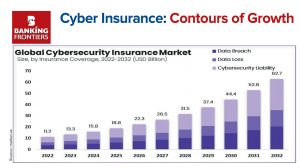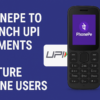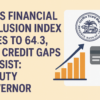Amrit Jaidka Arora, CHRO at Digit Insurance, shares insights on the winning formula for employee retention comprising an innovative blend of financial perks, non-financial initiatives, and the transformative impact of AI. Explore how learning, diversity, and data analytics is driving organizational success:

Ravi Lalwani: What improvements have you made in your financial and non-financial engagements with employees to improve retention?
Amrit Jaidka Arora: We have implemented a robust strategy to enhance both financial and non-financial employee engagements, with a particular focus on improving retention.
Financial engagement for us entails investment in employee learning and development initiatives, and regular compensation benchmarking to ensure we pay competitive remuneration to employees. Emphasis is also placed on recognizing and rewarding good performance through timely promotions and regular acknowledgment through reward schemes. A structured career growth alignment exercise is also followed, along with capacity and manpower planning to prevent overburdening employees. Furthermore, the implementation of LTIP (long-term incentive plan) serves as a retention tool for us.
In addition to financial incentives, we have implemented a range of non-financial measures to enhance employee retention. Regular and transparent communication channels, such as employee connects, round-table discussions, and AI-led feedback platforms like Amber, facilitate continuous dialogue between employees and management. The introduction of our mentorship program also provides a supportive environment for professional growth. The employee townhalls, which are conducted every month, encourage collaboration and knowledge sharing across different departments. We have also introduced the Culture Champions Awards to recognize employees embodying the organization’s values, fostering a culture of openness and ownership. These non-financial incentives collectively contribute to creating a positive and engaging workplace, promoting employee satisfaction and long-term retention.
What new courses and training programs are you offering your employees that you expect will improve employee retention?
We regularly undertake measures to prioritize employee development and retention through robust learning and training programs. Our dedicated Learning and Development team conducts regular BSL (bite-size learning) sessions for knowledge sharing, click-to-learn initiative (a self-paced learning program), and a knowledge hub (team-specific sessions) to help foster a collaborative learning environment.
We also continually include new and relevant courses on our Digit Academy platform. Reimbursing course costs and offering manager development programs demonstrate a commitment to nurturing leadership skills. Our strong study assistance policy, encompassing exam fee reimbursements and bonuses for completing courses in specific teams, encourages continuous learning. The emphasis on skill-set-based courses and a focus on professional development collectively contribute to a supportive and growth-oriented workplace.
Freshers are often the most difficult to retain. What new initiatives have you taken to improve fresher retention?
We have implemented a comprehensive approach to retain freshers through various initiatives. The Campus Connect program and Hire Right Trainee program ensure the recruitment of diverse freshers/trainees each year. The end-to-end interactive trainee experience, from campus visits to the completion of their first year of traineeship, fosters a strong connection. Providing autonomy in work and a robust internal job transfer policy offers opportunities for career growth and talent retention. The emphasis is on continuous learning during the traineeship period, coupled with feedback sessions that help in upskilling and ensure that they stay competitive in their roles. Overall, our initiatives focus on creating a positive and developmental environment, enhancing the likelihood of retaining fresh talent at competitive salary levels.
What do you think will be the impact of Generative AI on employee retention?
We feel that the impact of generative AI on employee retention in a growing startup like ours is multifaceted. Generative AI is helping us to streamline processes, automate repetitive tasks, and enhance productivity, allowing employees to focus on more strategic and creative aspects of their roles. It is even contributing to innovation by generating insights and ideas. One of the very recent examples of this is DarwinBox, our newly launched HRIS tool that aims to simplify our processes and data management techniques and is helping us to be 100% automated in our processes so that our employees can make each decision using the relevant data.
What steps have you made to improve DEI in your organization during the last 12 months?
Diversity and inclusivity are one of the core concepts at Digit and are embedded into our culture. Right from being one of the only few woman-led insurance companies, to having a high number of women in leadership roles, we feel it’s a regular thing for us!
We are very stringent about our equal opportunity policy and where we ensure no role is driven by any kind of bias. For us, besides making and positioning inclusion as our core value, we have always vouched for upholding merit in all job roles.
We have always tried to go beyond the homogeneous networks to tap into diverse talent pipelines. We are proactive with our search strategies by posting on certain websites, advertising in specific publications, or doing outreach through dedicated organizations.
Every company after it is successful in hiring a diverse workforce must give them generous boundaries of work and flexibility. It is important to keep a close check on the pulse and track what drives them. We are constantly doing dipstick and pulse surveys to track the health of the organization and keep us on the right track.
What new job roles has the company introduced in the last 12 months and what has been the success in attracting the desired candidates?
Growing rapidly, we’ve launched new products, like pet and cattle insurance, which entail new roles, like hiring veterinary doctors. We have also introduced an apprenticeship program for freshers from diverse backgrounds to add a fresh vibe to our growing team. Our AI team has been doubling with a focus on automation in every team. Our focus is on successful hiring, adapting to market needs, and embracing change as a constant force.
How effective has employee data analytics been? What problems has it helped solve and which problems does it not solve?
Data analytics has proven instrumental in understanding and addressing employee challenges within our organization. By leveraging analytics, we’ve gained valuable insights into various aspects of the employee experience. Identifying patterns and trends has allowed us to pinpoint potential issues early on, enabling proactive problem-solving measures. Regular discussions fueled by data-driven insights provide a foundation for informed decision-making and collaborative problem-solving as below:
Better Employee Engagement: It is helping us to enhance engagement by analyzing feedback, performance data, and employee surveys. Insights help tailor engagement programs to boost morale and productivity.
Core Data Management: Analytics is helping us to streamline core HR data processes, ensuring accuracy and efficiency in managing employee records, payroll, and benefits. This improves overall data reliability and compliance in the insurance sector.
Attrition Highlights: Through data analysis, we can identify attrition trends, reasons, and high-risk areas. This enables targeted interventions, such as personalized retention plans, to address challenges and reduce turnover.
Manpower Planning: Aiding in strategic manpower planning by predicting future workforce needs based on business trends.
It has helped us gain key insights on geographical dynamics concerning stability, hikes, relevant skills, and competitor frameworks and accordingly guide our efforts in the right direction.
However, employee data analytics does not fully solve the human element of HR. While data can provide valuable insights, it does not replace the need for human judgment, empathy, and strategic decision-making. Also, they may not always fully address the complexity of interpersonal dynamics and relationships within the workplace.
Read more:









